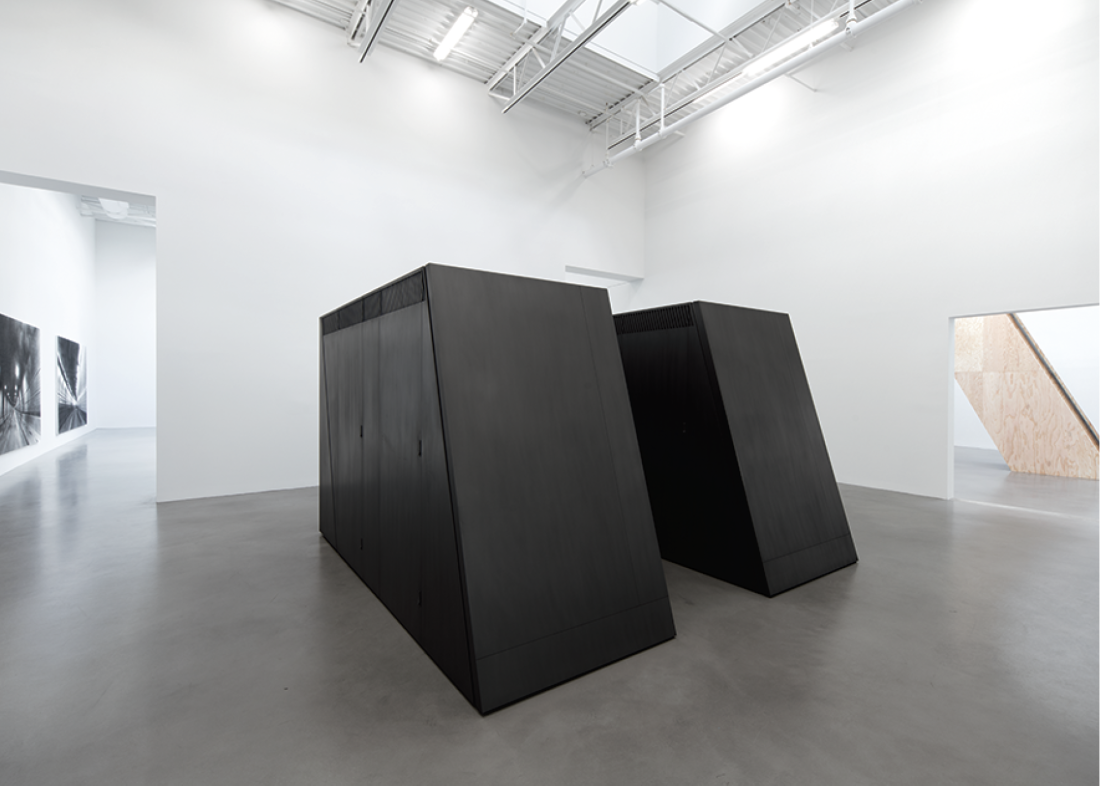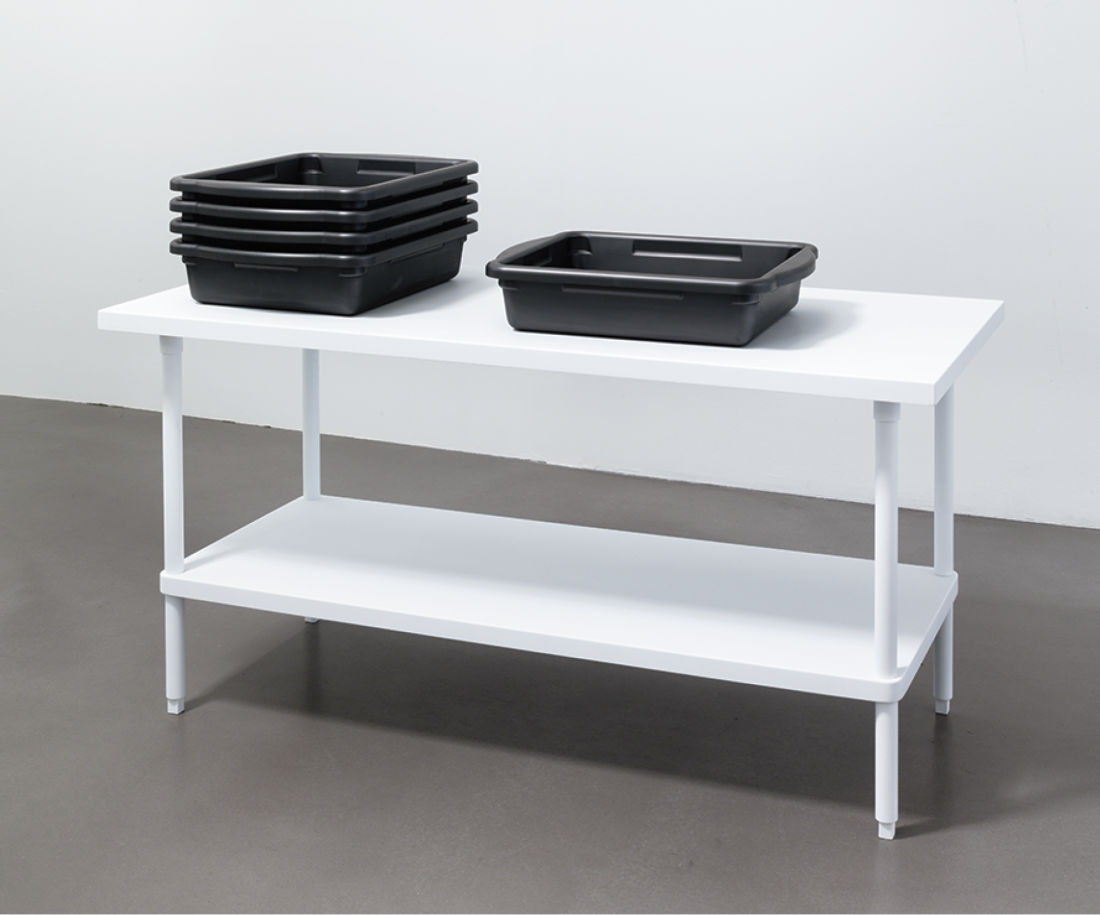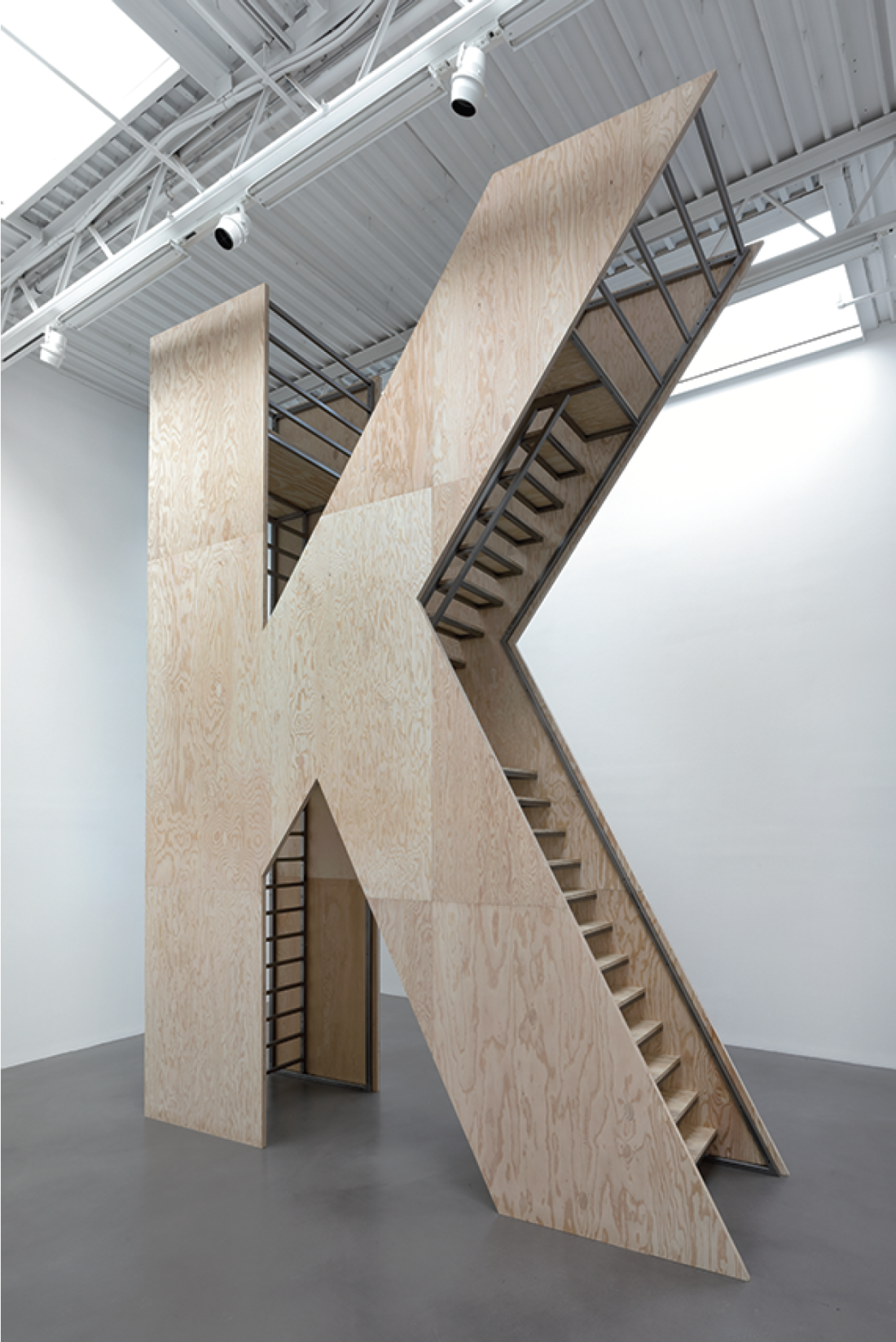Adam McEwen
From a distance, Adam McEwen’s art practice looks like it easily fits within a certain set of contemporary art conventions. Smoothly negotiating a space somewhere in the overlapping middle ground of post-conceptual and post-minimalist approaches, the kind of work he’s known for, in all its wide-ranging forms, appears from afar to be strategically nuancing this territory along slowly advancing, stylistically motivated, tactical lines. After some consideration however, heterodox characteristics start to show themselves. McEwen’s recent show “Harvest” at the Friedrich Petzel Gallery in New York is a strong case in point. Subtly multivalent choices lead the work away from merely illustrating or glossing the received art logic he appears to start with.
Especially in the initial phase of reading the work, a recurrent aspect is a frequently surfacing absurdist tendency which modifies expected and likely outcomes and individualizes McEwen’s project in stranger ways than anticipated. Odd juxtapositions of elements bring things together in a collision that at first feels incommensurate, but which becomes fascinatingly productive to consider. In previous works, for example, where dirty, chewed bubble gum was used as a send-up medium to spoof expressionist paintings, an underlying historical geopolitics is ultimately signified. Deadpan “obituaries” of living people were presented as a text-based conceptual project that addressed universal eventual mortality as though reducible to the spectre of a “mass-produced,” posthumous 15 minutes (or less) of pop fame. There is also the recurrent use of graphite as a sculptural material, with its ambiguously unstable metamorphic qualities being the substance out of which to fashion facsimile pieces of well-known, quotidian industrial products, like air conditioners or water coolers. Precisely fine-tuning the way in which things are made in relation to their content has been a constant preoccupation, a kind of balancing act of their semiotic logic to aesthetic results, and vice versa. The notion that an object’s normative use value can be highlighted (and subjected to critique) by removing it from its putative social context is well-worn artistic territory, but repurposing such objects by the implication that they have been transformed into metaphoric (graphite) drawing tools, indeed into drawings or individual marks, is not something the mind already knows, per se.

Adam McEwen, Blue Gene 2, 2016, graphite, 80.75 x 131.5 x 48 inches. All images courtesy the artist and Petzel Gallery, New York.
“Harvest” opens with the piece TSA in the gallery’s foyer, a small, anodyne white table on which some airport security bins mimetically rendered in graphite are sitting, presumably waiting for ghostly shoes, belt buckles, laptops and wallets to be placed in them for inspection. Certainly there is a harmlessly sarcastic joke involved in juxtaposing security procedures with entering a gallery, which turns out to make increasingly menacing sense as we move through the show. But in drawing our attention to possibly inefficient and sometimes impotent police threats to our society (and culture) in this context, something open-ended is being signified as well, getting at ideas both hotter and colder than the cool and comprehensible surface of TSA’s most immediate meaning. Both literal and figurative aspects of conveyance are brought to mind, as well as distantly Kafkaesque gatekeeping.
Continuing into the exhibition—which takes movement as a central theme—the doorways of the gallery itself have been configured to permit only partial, particular views of what is installed in the next room, creating a multi-level deferrment of experience and understanding, which accelerates the potential power of the confrontation we then have with each individual work. The next room opens up this logic in a grand, if somewhat wacky manner. The piece Staircase stands alone, installed in such a way as to read as an object almost purely formal when seen through either of the two doorways by which it is visible—but in fact it is a giant letter K, turned into a stairway to nowhere—or to everywhere, back to where we were, to the beginning. The letter itself has had an oddly distinguished career as a loaded signifier (in Kafka for instance) and here its iconic presence in steel and wood ratchets up the weirdness in a manner that feels surprisingly credible, like hearing a beautiful song in a language you don’t speak, but you just get it anyway. Apparently the letter K is graphically derived from the image of an open hand. We feel the work grasping for the process, and for the end of signification as a meaningful activity, a synchronic journey, as well as the place in which to arrive. McEwen sews together a disparate idea set, and makes it all seem perfectly rational. This effect is amplified considerably if we accept the invitation (after signing a waiver) to climb the almost 19-foot-high sculpture like a jungle gym.

Adam McEwen, TSA, 2016, graphite, Corian, 27 x 40 x 60 inches.
Monolithic twin computer banks, also in graphite, called Blue Gene (I and II) are installed together in the second room. Again, the initial impression given off by the work is deceptive, beginning by seeming like classic, virtuosic minimalist objects, and then modifying that identity in almost every conceivable way, although without abandoning the visual pleasures they permit us. By playing and punning (even in the retention of their actual given IBM names), twinning and twisting together numerous aspects of the idea of doubleness and binary coding, the piece ingeniously manages to hold together the idea of storing knowledge “within” art in terms of necessity and impossibility. It’s a subtly hysterical send-up of the notion that meaning and information aesthetically inheres, waiting straightforwardly for us to come, look at it, and understand. Graphite becomes a symbol for art and information, in being things that seem to hold their shape in firmly delineated lines, which nonetheless quietly imply erasure, mutability and impermanence, and the blurring of boundaries. The work dares to be funny in its manner of questioning whether or not knowledge and its storage can be what they seem to be: are they ultimately one and the same, or is there always slippage, always movement within what we designate to be facts?
The last room contains a suite of four “paintings,” in fact large-scale inkjet prints on cellulose sponge (another frequently used and surprisingly sensual material) of the four Manhattan tunnels; and one smallish steel sculpture called Lock, a replica of a New York-specific, and once notorious, anachronistic door bar. Lock appears to be holding up the wall against which it is installed. McEwen was present in Manhattan during 9/11 and describes it as “seeing the impossible.” Summoning the Battery, Holland, Midtown and Lincoln tunnels as a kind of post-apocalyptic crossroads of the mind—but also of real, lived experience—he again presents a double bind, in which escape and movement are proffered but withdrawn, not by authority but by reality itself. These pictures describe speed and escape while implying that they are impossible illusions, there is only the tunnel, a never-ending careening cypher. This information is like Schrodinger’s cat, neither alive nor dead, in suspension—except that the artist’s irreducible need to create somehow comes to terms with an otherwise nihilistically ironic state of affairs. The title “Harvest” invokes the four seasons, the forward and the recurrent movement of things, and here the artist gropes toward an expression that tunes its balance to a perfect pitch of presence and absence, seriousness and lightness, hope and despair, and back again. ❚

Adam McEwen, Staircase, 2016, wood, steel, 18 feet 10 inches x 12 feet 11.625 inches x 3 feet 10.25 inches.
“Harvest” was exhibited at Petzel Gallery, New York, from March 3 to April 30, 2016.
Benjamin Klein is a Montreal-based artist, writer and independent curator.

